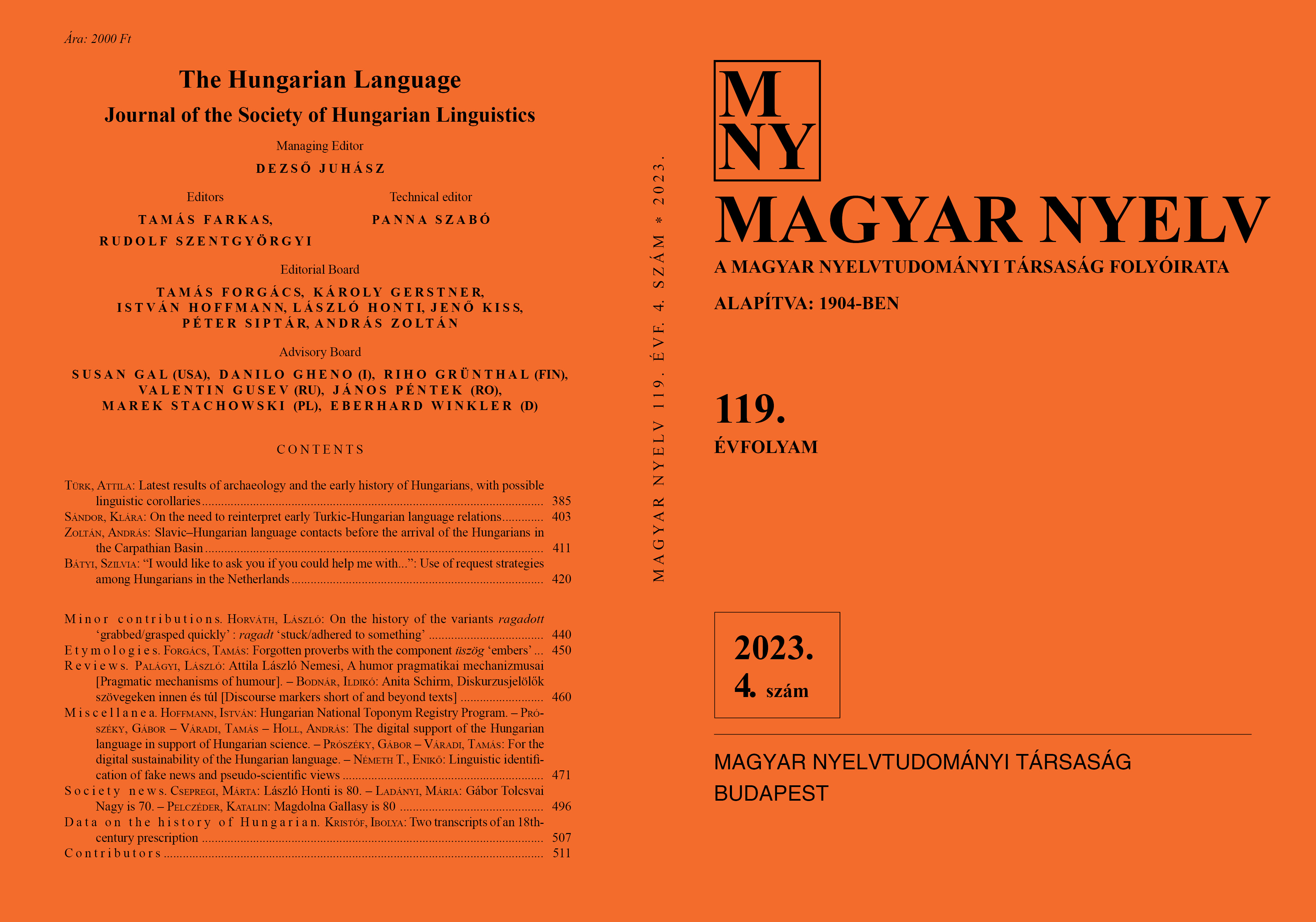On the need to reinterpret early Turkic-Hungarian language relations
DOI:
https://doi.org/10.18349/MagyarNyelv.2023.4.403Keywords:
historical sociolinguistics, history of Hungarian language, linguistic reconstruction, Turkic–Hungarian language contactsAbstract
In the last hundred years, a consensus has emerged within Turkology on the study of pre-11th century Turkish-Hungarian relations. This includes, for example, that words were introduced into Hungarian in several waves from several Turkic languages; that language contact lasted for several hundred years; that most of the words were introduced into Hungarian within the Khazar Empire. The reconstruction of early Hungarian history has always been a major aspect of the research. In my paper I argue that with the traditional view of language one cannot answer the question which people spoke the source languages, nor how many Turkic languages the late prehistoric Hungarian language came into contact with: it is possible that it was only one, and this cannot be fitted into the R-Turkic-Turkic dichotomy; it is also possible that the contact was very intensive and lasted only a few decades. I propose a socio-historical linguistic approach for a better understanding of the language history, which I believe will require a rethinking of the previously generally accepted answers.
Downloads
Published
Issue
Section
License
Copyright (c) 2023 Klára Sándor

This work is licensed under a Creative Commons Attribution-NonCommercial-NoDerivatives 4.0 International License.
Magyar Nyelv is a Diamond Open Access periodical. Documents can be freely downloaded and duplicated in an electronic format, and can be used unchanged and with due reference to the original source. Such use must not serve commercial purposes. In the case of any form of dissemination and use, Hungarian Copyright Act LXXVI/1999 and related laws are to be observed. The electronic version of the journal is subject to the regulations of CC BY-NC-ND (Creative Commons – Attribution-NonCommercial-NoDerivatives).
The journal permits its authors, at no cost and without any temporal limitation, to make pre-print copies of their manuscripts publicly available via email or in their own homepage or that of their institution, or in either closed or free-for-all repositories of their institutions/universities, or other non-profit websites, in the form accepted by the journal editor for publication and even containing amendments on the basis of reviewers’ comments. When the authors publicize their papers in this manner, they have to warn their readers that the manuscript at hand is not the final published version of the work. Once the paper has been published in a printed or online form, the authors are allowed (and advised) to use that (post-print) version for the above purposes. In that case, they have to indicate the exact location and other data of the journal publication. The authors retain the copyright of their papers; however, in the case of an occasional secondary publication, the bibliographical data of the first publication have to be included.



